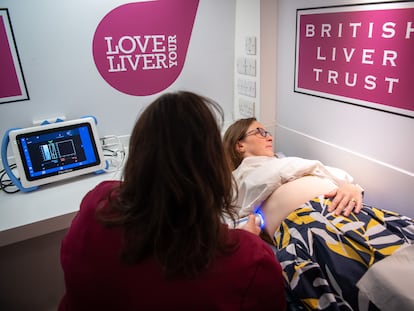Study indicates that people over 40 may benefit from small amounts of alcohol consumption
Experts caution against misapplying the results of a 30-year study conducted in 204 countries

Generally speaking, consuming alcohol is bad for your health, and the more you consume, the worse it is. However, there may be exceptions to this general rule. That is one of the conclusions of an expansive study sponsored by the Global Burden of Disease (GBD) and published in The Lancet. From 1990 to 2020, the study analyzed 22 health indicators such as cardiovascular disease, traffic accidents, and cancer, in men and women between 15-95 years old, located in 204 countries. As other studies have found, there is no level of healthy alcohol consumption for people under 40. However, the study found that people over 40 could have some cardiovascular or diabetes-related benefits from consuming small amounts (less than two glasses of wine a day). This conclusion, which resulted from a minor change in the data analysis method, tempers an earlier GBD study published in The Lancet that concluded there is no safe level of alcohol consumption for any age group.
The new study explains that the ethanol content of alcohol increases the production of good cholesterol, which acts on the endothelium (a thin membrane that lines the inside of the heart and blood vessels) in a manner that can be beneficial for conditions like cardiovascular disease and diabetes. Iñaki Galán, a researcher with Spain’s National Epidemiology Center (CNE) cautions: “Alcohol consumption can increase the risk of other diseases such as breast and colorectal cancer, as well as traffic accidents. I think it’s better to recommend zero consumption.” Juan Turnes, head of the department of digestive diseases at Pontevedra University Hospital (northwest Spain) and a member of the Spanish Association for the Study of the Liver, finds the study very useful for understanding the global health impacts of alcohol consumption. But he also cautions against applying the study’s macro-level results to individuals. “Even if a healthy amount of alcohol consumption exists, we still have the problem that it leads to addiction. It’s ethically questionable to recommend consuming the medical definition of one or two drinks, which is less than what most people consider to be a drink,” said Turnes. “It’s hard to avoid increasing consumption over time.”
Emmanuela Gakidou, professor of Health Metrics Sciences at the University of Washington (USA) and coordinator of the study, says, “Young people shouldn’t drink, but older people can benefit from drinking small amounts. Although it’s unrealistic to think that young people will abstain from drinking, we believe it’s important to communicate the latest scientific evidence so that everyone can make informed decisions about their health.” Dana Bryazka, a researcher at the University of Washington and co-author of the study, says that people should not “drink more alcohol to prevent disease nor make individual-level recommendations based on the results of this study.”
The GBD report shows that 1.34 billion people consumed harmful amounts of alcohol during the period studied, with men far outnumbering women (1.03 billion versus 312 million). The heaviest users of alcoholic beverages are men, particularly those under the age of 40. That cohort, which accounts for 59.1% of all heavy drinkers, is dominated by men (76.7%). This indicates that men under 40 should be the main focus of efforts to mitigate the harm caused by alcohol consumption. The authors of the study also recommend revising the guidelines for alcohol consumption to lower the maximum amounts suggested for young people. The main risk of alcohol consumption by young people comes from traffic accidents and other risky behavior, rather than from health complications.
Some benefits of small amounts of alcohol consumption were detected for the 40-64 age group. Yet harmful health effects are detected in men of this age after 1.69 drinks, and in women after 1.82 drinks. The threshold is higher for people over 65: harmful health effects are detected in men after 3.19 drinks, and in women after 3.51 drinks. The authors note that these levels vary from region to region, and any local guidelines should take into account the prevalence of specific diseases in that part of the world. For example, in some Asian countries, high rates of hepatitis make alcohol consumption more harmful than in areas where the disease is not as prevalent.
Tu suscripción se está usando en otro dispositivo
¿Quieres añadir otro usuario a tu suscripción?
Si continúas leyendo en este dispositivo, no se podrá leer en el otro.
FlechaTu suscripción se está usando en otro dispositivo y solo puedes acceder a EL PAÍS desde un dispositivo a la vez.
Si quieres compartir tu cuenta, cambia tu suscripción a la modalidad Premium, así podrás añadir otro usuario. Cada uno accederá con su propia cuenta de email, lo que os permitirá personalizar vuestra experiencia en EL PAÍS.
¿Tienes una suscripción de empresa? Accede aquí para contratar más cuentas.
En el caso de no saber quién está usando tu cuenta, te recomendamos cambiar tu contraseña aquí.
Si decides continuar compartiendo tu cuenta, este mensaje se mostrará en tu dispositivo y en el de la otra persona que está usando tu cuenta de forma indefinida, afectando a tu experiencia de lectura. Puedes consultar aquí los términos y condiciones de la suscripción digital.
More information

When did humans start experimenting with alcohol and drugs?
Últimas noticias
ICE raids trigger school absenteeism and traumatize children: ‘They have been forced to leave their childhood behind’
Maude Apatow, from acting in ‘Euphoria’ to directing: ‘There are many films that you can tell weren’t written by someone young’
The life of a delivery driver in China: ‘Many people don’t know how an order can arrive at their home in just one day’
Mexico’s missing people crisis casts a shadow over World Cup venue
Most viewed
- Christian Louboutin: ‘Young people don’t want to be like their parents. And if their parents wear sneakers, they’re going to look for something else’
- US sanctions against jailed cartel leader ‘El Marro’ highlight Mexico’s lack of control over its prisons
- Cartels in Mexico take a leap forward with narco-drones: ‘It is criminal groups that are leading the innovation race’
- Liset Menéndez de la Prida, neuroscientist: ‘It’s not normal to constantly seek pleasure; it’s important to be bored, to be calm’
- ‘El Limones’ and the growing union disguise of Mexican organized crime










































